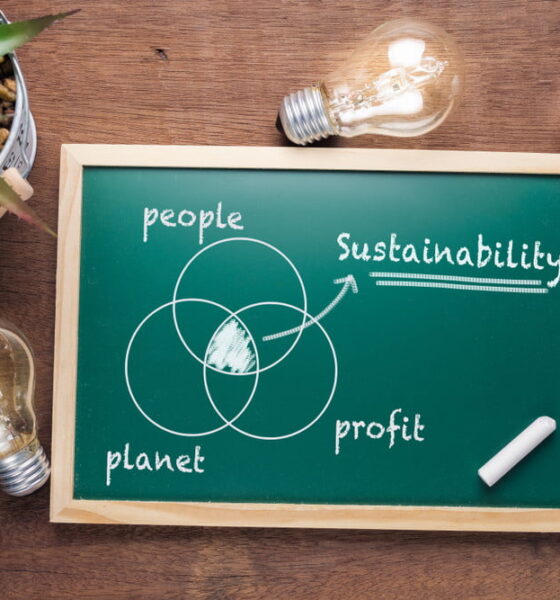

Invest
How To Do Sustainable Financial Planning For The Next Five Years
In April 2020, the US rate of personal savings touched an all-time high of 33%. This represents the income that remains after expenses have been met and taxes have been paid and is a percentage of the disposable income that people have saved. This rate could mean that people can achieve a better financial future, make down payments on property purchase, have more options for entertainment and leisure, enjoy better facilities in retirement and tackle unexpected expenses more comfortably.
This also means that people need to build on this foundation to create a sustainable and sturdy financial plan based on their own unique goals and aspirations.
Regardless of your age or income, it’s wise to create financial plans for the short, mid, and long terms.
What Is A Five-Year Financial Plan?
Your five-year financial plan essentially boils down to what your own financial goals are for your future. This is a mid-term financial plan that takes off where your short-term plan stopped.
Your immediate, short-term targets and your retirement plans are what the financial gurus’ term the economic “barbell” that’s heavily weighted on both sides.
The mid-point between these two gives you a more calibrated strategy to achieve your long-term goals after you’ve met your short-term ones.
At this point, you have probably:
- graduated college
- made strides in paying off your student loans
- have a stable personal relationship or are in the process of building one
- got plans to have a first or second baby
- secured a job and have set certain career goals
- got plans to purchase a house
- got plans to explore other career options or start a business
- started to save for a dream vacation/cruise
Keeping this scenario as a base, you can create a plan that will help you achieve your goals and also ensure that your long-term goals stay in place.
Why Do You Need A Five-Year Financial Plan?
Creating a sustainable and realistic financial plan is an important aspect of securing your future in terms of independence, comfort, goal-achievement, and maintaining the lifestyle you want.
It also helps you to stabilize your current situation and devise a strong, relatively short-term financial target based on an estimate of your present financial scenario.
If you have a family or people who are financially dependent on you, this exercise is an important one that helps you to provide for their future as well. Setting financial goals that take children into account must be flexible as their requirements change quite dramatically as they grow.
Something else that you have to process is the fact that your financial goals need not necessarily be in sync with your career or lifestyle goals. You can create a five-year financial plan regardless of whether you change jobs, quit your job, get married/divorced, have children, purchase/sell property, travel, etc.
Experts opine that incomes have become more volatile as job security fluctuates, making it even more important to have enough buffer to withstand sudden changes.
Tighter lending standards and more stringent regulations are now in place today compared to earlier years when easy terms were offered by credit card companies and banks.
Property and home prices are not growing as rapidly as they did in previous years, and if this forms the bulk of your investment, you may have to revisit your financial plans in the future.
With changes imminent in government policy regarding social programs, we may have to tighten our belts in the future and make bigger savings for retirement, college, and medical expenses.
How To Do Sustainable Planning For Five Years
1. Analyze your goals: This means you need to chalk out where you want to be in the next five years. If you want to purchase a home, start a business, take a break from work at the end of five years, start a family, buy your dream car, study, etc. Once you have these items down on paper, you can put a cost to them and have a concrete figure that represents each one.
2. Break Goals Down: Once you’ve firmed up your five-year goals, check if you can break them down into year by year targets. For instance, if you plan to buy a home, you could put it towards the end of your target list, while going on a dream cruise could be something that you could target for within a year or two. Prioritizing your goals is a good approach, provided you have a fixed and steady income. However, you can also look at saving simultaneously for all your goals based on the schedule of achievement you decide. You can save a larger amount for goals you want to achieve earlier and divide the rest of the available savings proportionately.
3. Revisit Your Goals Regularly: Remember that this is YOUR plan and you have every right to modify it as you like. Your initial interests may have altered and other priorities may have popped up. Ensure that your new or altered goals remain in sync with the five-year target.
4. Give Yourself Spending Money: Creating a tightly compartmentalized five-year financial plan looks great on paper, but in reality, you could find yourself trapped and feeling frustrated when you find something that you’d like to have or do. That’s why you need to set aside a certain percentage, even a small one, every month for miscellaneous expenses.
5. Risk Management: Because your mid-point goals are closer than your long-term ones, it’s important to manage your investments prudently. You can take risks and invest in high-interest savings for shorter-term goals, but take a more conservative approach to achieve long term goals.
6. Get Professional Help: Obviously, no one knows your finances and your financial goals better than yourself, but planning is another ball game altogether. Seek help from well-established, reliable, and reputable professionals in the field. The best financial advisor in San Franciscocan give you the right assistance and advice while keeping you abreast of the latest financial regulations, savings plans, and government notifications.
References


 Environment10 months ago
Environment10 months agoAre Polymer Banknotes: an Eco-Friendly Trend or a Groundswell?

 Environment11 months ago
Environment11 months agoEco-Friendly Home Improvements: Top 7 Upgrades for 2025

 Features9 months ago
Features9 months agoEco-Friendly Cryptocurrencies: Sustainable Investment Choices

 Features10 months ago
Features10 months agoEco-Friendly Crypto Traders Must Find the Right Exchange

















